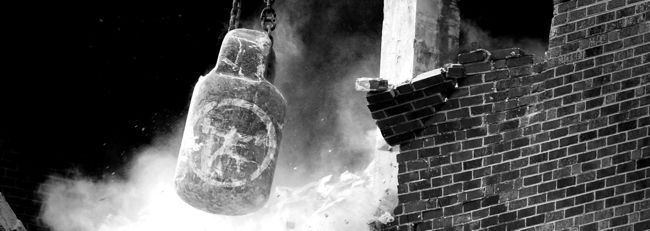

When Henry Ford invented the automobile, it nearly bankrupted him—more than once. It’s a popular story, a testament to perseverance and belief in oneself. It’s quoted by business gurus and fans of Americana. It’s retold to aspiring entrepreneurs and turned into near poetry by the self-help industry.
Henry Ford’s second invention though was what saved him—the assembly line. By automating the most expensive part of producing cars, Ford minimized the human element. Not only could a well-designed machine do a repetitive task more quickly, but it was easier to train a human being prone to error how to run a machine than how to build a car door. Break the car up into its components and assemble it all only at the end. The door would be built exactly the same way every time with no way for the human operator to screw it up. There was no longer a need for craftsmen. Anyone could be trained to pull the lever, press the button, and swing the arm. Experts were too expensive anyway.
Arthur Jones patented the Nautilus machine. He didn’t invent the concept of single muscle isolation or training. He didn’t build the first machines, and he didn't spend any time studying biomechanics. He copied the designs of various machines that he'd seen on a trip to Eastern Europe, labeled them with his brand, painted them all mediocre brown, and invited bodybuilders to endorse them. Some did. Pulleys and cables were novel in North America and novelty sells.
Jones advocated—insisted upon—his HIT template—one set on each machine to total muscular failure and then move on to the next. Break the body up into its smaller components. Train each “muscle group” once a week and no more. There’s no room for the damn humans to screw it up. And for awhile, it even worked. Bodybuilders who were used to doing gymnastics, free weights, jumps, and sprints made some progress, at least initially. A change is as good as a rest, as they say. Most bodybuilders have since attributed their initial gains on Jones’ machines to overtraining or just plain old novelty. The machines were quick, and it was easier to teach a human to adjust a seat than do a good back squat.
Arthur Jones and Henry Ford had more in common than just the use of machinery. The machinery was just the vehicle. The real commonality? Their business model.
Start with a plain old sheet of steel. Create a rough, door shape on the press. Use an inserter to add the windows. The joiner presses the two halves of the door together. Drills screw in the interior. Humans wipe off the dust and machine oil. The send it on down the line, hum something by Johnny Cash, and grab the next one.
Before this quick, efficient model of automation, a car door would take nearly a full day alone, require several tradesmen of varying skill levels, and always bear the probability of human error. Not anymore. Modern car factories are robotic wonderlands. Humans dot the landscape, clad in equipment to protect them from their mechanical masters, but they don't build the cars. They squire for the machines, pay their union dues, and plan their weekends.
The old, #1 Nautilus gyms are gone. They imploded when their rampant growth outpaced their ability to retain members in the long run. Lots of folks signed up, but few stayed longer than a few months. Building new facilities on up-front membership sales, Nautilus eventually ran out of new territory and succumbed to their massive debts. The #1 Nautilus gyms were bought up in pieces by other growing chains, and the patents were sold, copied, and modified just enough to avoid lawsuits.
The business model remains—charge a large fee up front for unlimited membership, make it attractive with promises of a very small monthly rate, and use the proceeds from the initial membership fees to build the next fitness center. Rinse and repeat. Choose equipment not based on benefit but on easy trainability. Certify “trainers” to teach people to use the machines. Lather them up, wipe them down, and send ‘em on down the line. Drum some inoffensive, upbeat techno music on your thigh.
Does the model work? Well, Gold's Gym was the first to pick up the same idea. They filed for bankruptcy in the early 1980s. Bally's softened the tone a bit, colored the machines differently (mediocre grey to avoid patent infringement), and filed for bankruptcy protection twice. The current sponsor of The Biggest Loser, 24-Hour Fitness, narrowly avoided the same fate by inventing the now popular cancellation policy—pay to join and pay to quit. Now, they're owned by a private equity firm—investment bankers. In Ontario, Premiere Curzon just went down to be bought up by another fast rising chain. Wave after wave after wave...
Want to know which chain fitness center is next? Look to the one opening new facilities at a rapid rate. Chances are, they're using your membership as collateral, and your own gym's mortgage sits in a bank’s itchy palms.
Is the car or the exerciser better? If you don't count the money, is it better to be a Dodge Neon, built the same way every time, consistently good for 100,000 km or less, and frequently recalled or a hand-built Italian sports car? Yes, the sports car requires more time, more human contact, and more expertise. It requires more patience. It requires precision and experience. It's built to work as a single unit, not a pile of replaceable parts.
Individuality trumps automation unless you’re a car door.








